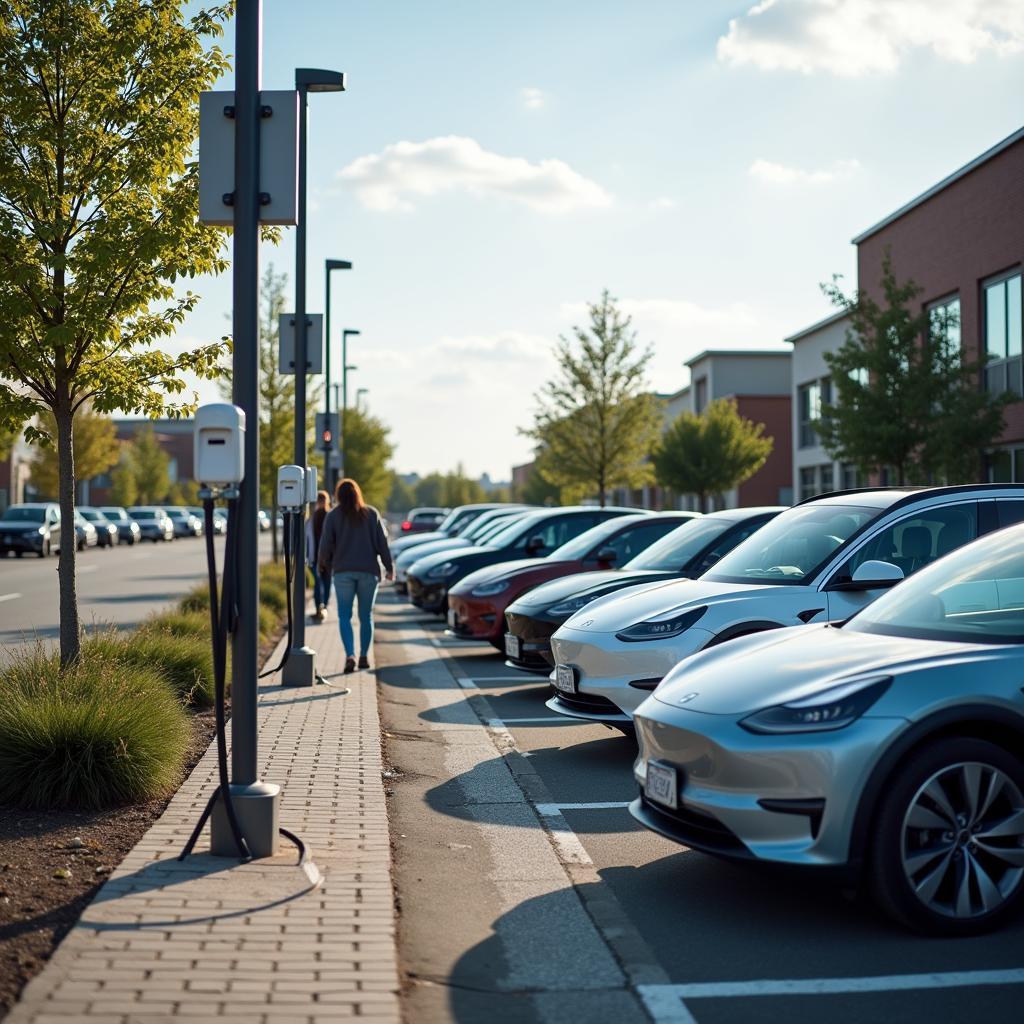The electric car revolution is here, and with it comes the need for reliable and convenient Electric Car Charging Services. Whether you’re a seasoned EV owner or considering making the switch, understanding your charging options is crucial. This comprehensive guide explores everything you need to know about electric car charging services, ensuring you’re always powered up and ready to hit the road.
What is Electric Car Charging Service?
Simply put, electric car charging service encompasses the infrastructure and providers that allow you to charge your electric vehicle (EV). This includes everything from public charging stations to home charging solutions and even specialized services for businesses.
Types of Electric Car Charging Stations
Not all charging stations are created equal. They vary in charging speed and connector type. Here’s a breakdown:
Level 1 Charging: The most basic level, often using a standard household outlet (120 volts). It’s slow, typically providing 2-5 miles of range per hour.
Level 2 Charging: Found in homes, workplaces, and public areas, it uses a 240-volt outlet and is significantly faster than Level 1, offering 10-60 miles of range per hour.
DC Fast Charging: The fastest charging option available, usually found along highways and in dedicated charging plazas. It uses direct current (DC) and can provide up to 80% charge in 20-40 minutes, depending on the vehicle.
Public vs. Home Charging: Which One is Right for You?
Choosing between public and home charging depends on your individual needs and driving habits.
Home Charging:
- Convenience: Charge overnight and wake up to a full battery.
- Cost-effective: Often cheaper than public charging, especially with off-peak electricity rates.
- Ideal for: Daily commuters and those with dedicated parking.
Public Charging:
- Accessibility: Essential for long trips and when home charging isn’t an option.
- Growing Network: Public charging stations are becoming increasingly common.
- Ideal for: Road trips, occasional drivers, and apartment dwellers without dedicated parking.
Key Factors to Consider When Choosing an Electric Car Charging Service
With a growing number of electric car charging service providers, selecting the right one can seem overwhelming. Consider these factors to make an informed decision:
1. Charging Network Coverage: Ensure the provider has a robust network of charging stations in your area and along your frequently traveled routes.
2. Charging Speed: Consider your typical driving needs and choose a provider offering a mix of Level 2 and DC fast charging options for optimal convenience.
3. Pricing Plans: Charging service providers offer various pricing models, including pay-as-you-go, monthly memberships, and time-based charging.
4. Payment Options: Opt for a provider that offers seamless payment methods, such as mobile app payments, RFID cards, or contactless credit card payments.
5. Additional Features: Look for providers that offer added benefits like charging station finders, real-time availability updates, and charging history tracking.
The Future of Electric Car Charging Service
The future of electric car charging service is bright. We can expect to see:
- Increased Charging Speeds: Advancements in battery technology and charging infrastructure will lead to even faster charging times.
- Wireless Charging: Imagine pulling into your parking spot and having your car charge wirelessly. This futuristic concept is already being tested and developed.
- Vehicle-to-Grid Technology (V2G): This technology allows EVs to not only draw power from the grid but also feed energy back, potentially turning your car into a mobile power source.
Conclusion: Embrace the Electric Revolution with Reliable Charging
Electric car charging service is no longer a luxury—it’s a necessity. By understanding the different types of charging, evaluating your needs, and choosing a reliable provider, you can enjoy the many benefits of electric car ownership. Embrace the electric revolution and experience a cleaner, more sustainable way to drive.


